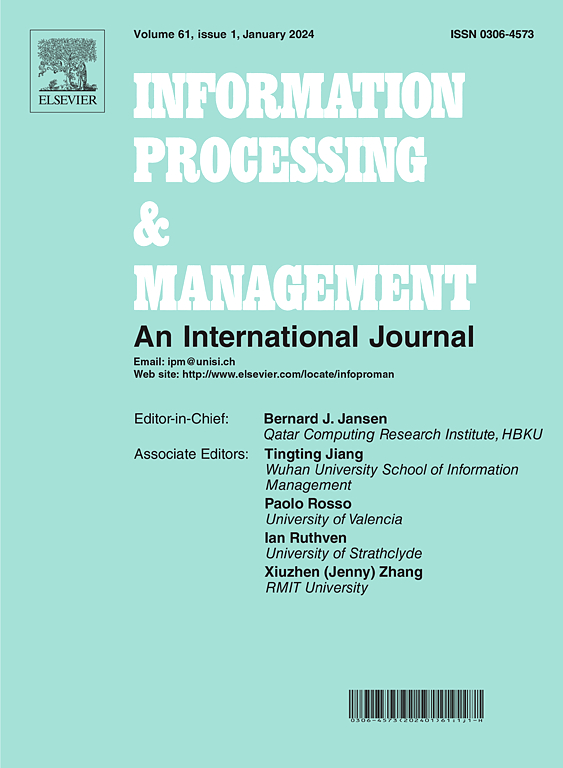Exploiting diffusion-based structured learning for item interactions representations in multimodal recommender systems
IF 7.4
1区 管理学
Q1 COMPUTER SCIENCE, INFORMATION SYSTEMS
引用次数: 0
Abstract
Multimodal Recommender Systems (MRS) enhance the performance of recommendations by utilizing different item information, such as text, images, and audio. Existing non-graph-based MRS techniques combine embeddings (i.e., id and multimodal embedding) but ignore indirect and higher-order interactions. Graph-based MRS approaches use graph sparsification (GS) to construct item graphs and graph convolutional networks (GCNs) for higher-order interactions. However, GS reduces the item graph size, while GCNs ignore specific information due to their predefined weights. Hence, to mitigate the mentioned issues, this study proposes a Diffusion-based Structured Learning technique for Multimodal Recommender Systems (DSL-MRS) that improves the latent item graph information flow while maintaining its structure. Additionally, we used a graph attention neural network (GANN) to represent complex higher-order item-item interactions and implemented an attention mechanism to prioritize relevant nodes by assigning weights to neighbour. Also, for optimization, a Weighted Approximate-Rank pairwise (WARP) loss function has been used to prioritize predictions for observed items over those for unspecified items. To demonstrate the advantage of DSL-MRS, we conducted extensive experiments on three publicly available categories of Amazon datasets. The experimental findings showed that the proposed approach led to an average improvement of 5.8 % in R@20, 8.7 % in precision@20,7.8 % in NDCG@20 and 8.8 % in F-score@20 compared to the baseline model. Ablation studies demonstrate the value and efficacy of DSL-MRS, as its components degrade performance when removed.
求助全文
约1分钟内获得全文
求助全文
来源期刊

Information Processing & Management
工程技术-计算机:信息系统
CiteScore
17.00
自引率
11.60%
发文量
276
审稿时长
39 days
期刊介绍:
Information Processing and Management is dedicated to publishing cutting-edge original research at the convergence of computing and information science. Our scope encompasses theory, methods, and applications across various domains, including advertising, business, health, information science, information technology marketing, and social computing.
We aim to cater to the interests of both primary researchers and practitioners by offering an effective platform for the timely dissemination of advanced and topical issues in this interdisciplinary field. The journal places particular emphasis on original research articles, research survey articles, research method articles, and articles addressing critical applications of research. Join us in advancing knowledge and innovation at the intersection of computing and information science.
 求助内容:
求助内容: 应助结果提醒方式:
应助结果提醒方式:


